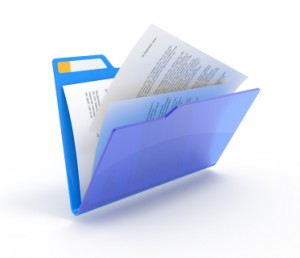Staying Organized During Divorce
 Filing for divorce often brings with it a tsunami of paperwork, including required court forms, paperwork requested from your attorneys, financial records, and change of address paperwork for your child’s school. Getting a divorce may also mean suddenly having a new daily schedule or finding your days filled with appointments, from attorney visits to appointments with a family therapist. Sound overwhelming? It doesn’t have to be, as long as you start with these four easy steps to get organized–and stay organized–during your divorce:
Filing for divorce often brings with it a tsunami of paperwork, including required court forms, paperwork requested from your attorneys, financial records, and change of address paperwork for your child’s school. Getting a divorce may also mean suddenly having a new daily schedule or finding your days filled with appointments, from attorney visits to appointments with a family therapist. Sound overwhelming? It doesn’t have to be, as long as you start with these four easy steps to get organized–and stay organized–during your divorce:
1. Make a To Do List: Write down everything that needs to be accomplished during the week, and then assign a day (and even a specific time) for completing each task. Some people prefer to do harder tasks first to get them out of the way (i.e., take time to collect the financial documents your attorney has requested) before moving on to easier tasks. Pick a style that works for you, but knowing what absolutely must get done during the week will help you to better budget your time.
2. Maintain a Family Calendar: Write down appointments directly related to your divorce (attorney meeting times, meeting with a real estate agent, etc.), but also get in the habit of writing down personal and family appointments and outings with your kids, too. Your calendar, besides helping you know where you need to be and when, can also serve as evidence showing times you were with your children and the types of activities you were engaged in. For it to serve this purpose, make sure the calendar is accurate and kept up-to-date.
3. Organizing Divorce Documents: Buy a large accordion folder (at least 16 tabs) to use as a homebase for all your divorce-related paperwork. Depending on the specifics of your divorce, helpful labels for dividers include:
– Attorney Documents (any paperwork you need to fill out for your lawyer)
– Court Papers (paperwork to be filed in family court)
– Attorney Receipts/Bills
– Household Inventory
– Household Documents (copies of mortgage note, insurance policy, etc.)
– Pay Stubs/Income Documents
– Tax Returns
– Bank Statements
– Monthly Expenses
– Asset Documents (copy of car title, appraisals, stock information)
– Debts
– Children’s Expenses
– Child Support Receipts
– Spousal Support Receipts
– Evidence from Witnesses
– Property Distribution Receipts
Keep the folder in a secure location and add to it as new documents come to you. Because it gives you the ability to produce documents on the spot, bring your folder along to attorney appointments.
4. Take Divorce One Step at a Time: With so much on your plate, it is all too easy to feel stressed out and overwhelmed, no matter how neatly written your to-do list is! Stay “mentally organized” by focusing on one thing at a time as best you can. Sure, there may be a few stray tax forms or bank statements that you still need to find as you go about collecting your financial documents. Locate the ones you can, add “find bank and tax forms” to your to do list and move on to the next task. Focused breathing or playing soothing music in the background may also help you stay calm and relaxed when completing tasks.

